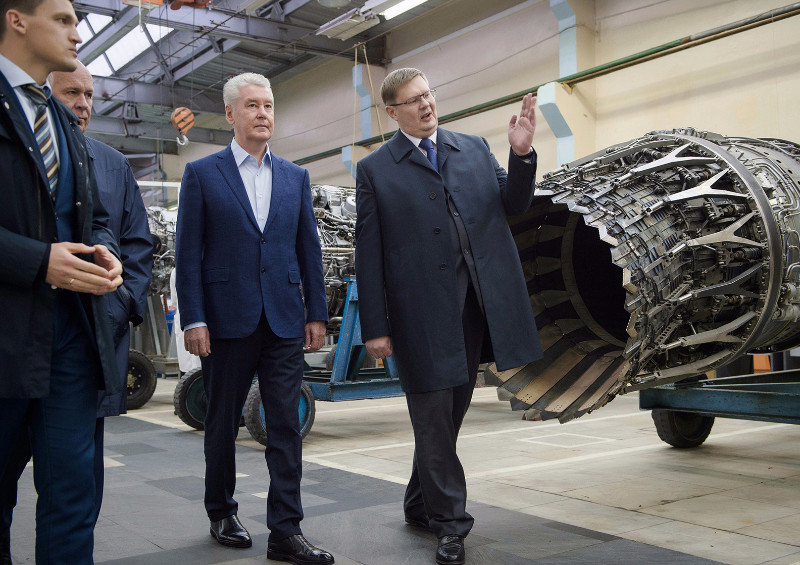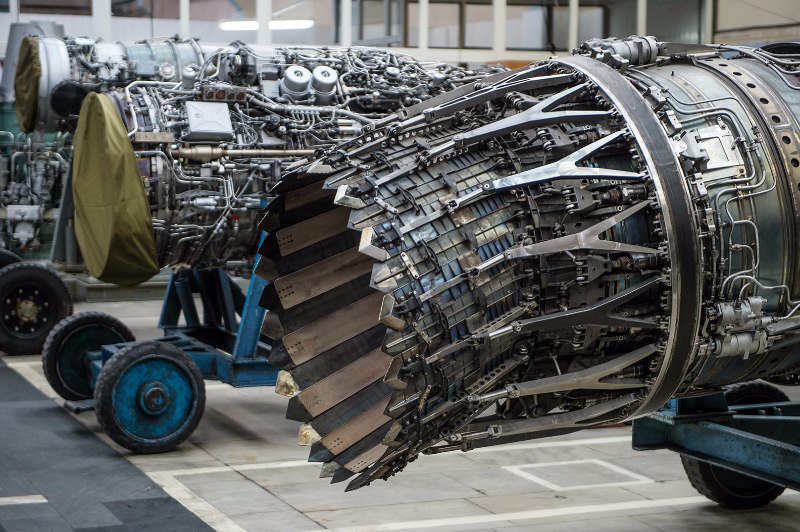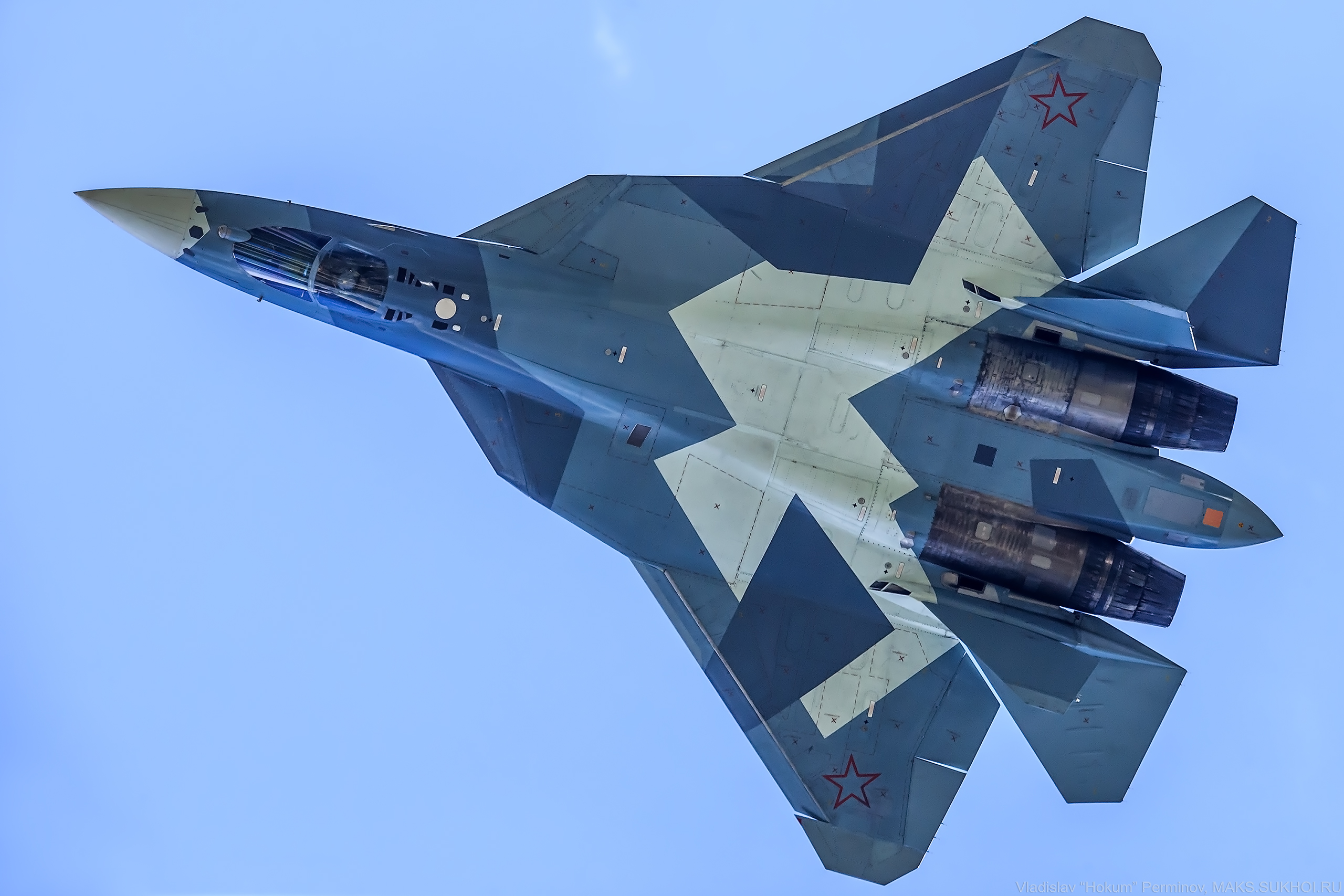https://www.popmech.ru/weapon/392902-rossiyskiy-istrebitel-5-go-pokoleniya-luchshiy-v-mire/
What are the features of the fifth-generation fighter in comparison with the cars of previous generations? The best thing about this can be told by one who had the opportunity to make a comparison on personal experience, the honored test pilot of the Russian Federation, the hero of Russia Sergey Bogdan, the first who lifted the T-50 into the air and performed the bulk of the tests on this car.
What is the fundamental difference between the fifth and fourth generation fighters from the point of view of piloting?
Compared to the 4th generation aircraft, such as the Su-27 or the MiG-29, the T-50 has a noticeably light control. Earlier in the piloting of combat aircraft very much depended on the pilot. It was the pilot, working with the control knob, the engine control lever (ODR), had to withstand the flight modes: do not exceed the dangerous angle of attack, overload. In those days, the load on the controls and the amount of deviation of the handles were of fundamental importance. The pilot kinesthetically, literally the whole body could feel the limits for which he can not move in management. Now the integrated control system automatically maintains these modes, and there is no need to "tighten" the controls so much, because with the energetic maneuvering that can be performed by the 5th generation aircraft, piloting can turn into a very energy-intensive process. It should be noted that on the Russian fighters of the generation 4 ++ (Su-35) and 4+ (Su-30SM), efforts on the controls were already significantly reduced compared to the Su-27 and piloting became much more comfortable. Externally, the Su-35 is virtually indistinguishable from the Su-27. In fact, these are radically different planes, both for handling, for maneuverability, and for many other indicators. But when the pilots mastered the Su-35, they easily retrained and gave the car only enthusiastic evaluation. There is no reason to believe that the transition to the T-50 in terms of piloting will be more difficult. In fact, these are radically different planes, both for handling, for maneuverability, and for many other indicators. But when the pilots mastered the Su-35, they easily retrained and gave the car only enthusiastic evaluation. There is no reason to believe that the transition to the T-50 in terms of piloting will be more difficult. In fact, these are radically different planes, both for handling, for maneuverability, and for many other indicators. But when the pilots mastered the Su-35, they easily retrained and gave the car only enthusiastic evaluation. There is no reason to believe that the transition to the T-50 in terms of piloting will be more difficult.
And if we talk about the physical condition of the pilots - do we need additional training to switch to the T-50?
Yes, the requirements for physical training for pilots of cars of the 5th generation are higher. The fact is that the 4th generation aircraft could go into 9 g overload, but this peak regime lasted no more than 1-1.5 s. Further, with such an overload, the drag increased sharply, the speed of the aircraft fell, and with it the overload. However, the 4+ and 5 generation fighters have significantly more powerful engines, and as a result can withstand 9 g for a much longer time - for example, for one or two minutes. And all this time interval the pilot should be in a tonus and supervise a situation. Here, of course, physical training requires a very serious attitude.
The 5th generation is a new functionality, new weapons systems. Will it be more difficult for a pilot to manage all these systems?
Yes, the load on the pilot as an operator grows significantly. The nomenclature of armament of the 4th generation aircraft did not exceed the ten. The pilot was required to master three operations: work on land, work on air-guided weapons (several types of missiles) and work by air uncontrolled means (shooting from a cannon). The T-50 armament nomenclature is approaching half a hundred completely different means with different principles of guidance. Weapons with television guidance, radar sighting for sea and land targets ... Each type of weapon has its own information support, its indicators. And that's not all - the pilot can still manage a whole group of aircraft. While conducting his battle, he must distribute tasks for subordinate crews.
It was necessary to develop such algorithms for issuing information, so that the pilot read it unerringly and made competent decisions. Only the work of scientists from the Institute of Space Medicine together with designers, test pilots, military pilots led to the fact that the algorithms were optimized, the control field became non-conflicting. But still the load on the pilot lies colossal. Therefore, on the aircraft of new generations the task of piloting is generally secondary. While performing the aiming, the pilot can be distracted from piloting, throwing the control stick even with the autopilot off. The aircraft's automation "knows" that the car is not controlled, and if the fighter is, for example, in the roll and fall mode, the aircraft itself removes the roll and goes into a horizontal flight. The main thing is gun control.
Is it true that combat aircraft of future generations will be unmanned?
The pilot does not exist to heroize and receive rewards. Its main function is the performance of the combat mission. If this or that combat mission can be performed without human intervention, then the pilot will be replaced by the automatic system, especially since the manned aircraft is by definition more expensive than the drones, and it is impossible to risk the life of a highly qualified pilot without special need. Another thing is that the transition to unmanned combat aircraft will not happen simultaneously. The UAV will gradually transfer certain functions (reconnaissance, reconnaissance, strikes). At first, mixed groups will fight in the sky. The pilot in the manned aircraft will manage the UAV group, set them tasks. Recall that at first people hunted without help, drove the beast on their own, but then they tamed the dogs, and the dogs were given functions, associated with the greatest risk. This will also happen in combat aviation, until the artificial intelligence finally dislodges the person, and the pilot does not turn into a ground operator.
Sky. Human. Fighter
The operation of multifunctional fighters (MFIs) of the 5th generation puts a person in conditions of a prohibitive level of overloads - physical, psychological, information. No wonder they say that the MFI will be the last manned plane of this class. Then follow even more abrupt aircraft, in which the person will be unsafe, and simply contraindicated.
The 5th Generation MFI is conceived and implemented as a "network soldier" of the C4I system (Computers, Command, Control, Communications, Intelligence). In essence, C4I is a global system of coordinated group actions, but in it, despite intellectual computer technologies, the main decisive link remains a man: he has to understand the situation, make decisions and himself to execute them.
And this is in the conditions of not only outrageous information, but also physical, and psychological loads, too. Overloading at 10 g becomes the usual maneuvering mode. The plane sometimes takes unusual spatial positions: it is even capable of hovering in the sky. This also includes lateral overloads during lateral flat maneuvers, which they have not encountered before. All these new phenomena began to be observed in aviation after the aircraft received a system of all-vector control of the thrust vector of the engine - UHT, from which it acquired a new quality of the super maneuverable "wobbly", in English terminology (agility), aircraft. And on agility-planes only "agile" agility pilots can fly.
The solution is an effective interactive anthropocentric interface. It should provide the pilot with an opportunity to cope with the surrounding extreme when staying in a state of psychological stress and working with prohibitive amounts of information with a time deficit become commonplace for the person sitting in the cab.
The cabin of a fighter of generation 5 is a "glass cabin", similar to the cabins of many modern aircraft. But its information-control field (FTI) refers to a new type. Instead of a set of multifunctional indicators, it uses a single touch-screen interactive screen that occupies the entire front instrument panel of the cabin.
All the necessary information from the on-board avionics, as well as video information from the on-board sensors, supplemented with sighting and flight symbols, is displayed on the information windows of this screen. Working with the screen facilitates the presentation of information in color "picture" formats that are understandable and visible to the person and clearly perceived quickly. The large screen size, which is 500 x 200 mm in F-35 and 610 x 230 mm in Su-35S and T-50, is easily covered by a sight at a standard observation distance of 500-700 mm. Support for binocularity and high definition images contribute to the creation of a well-known on-home HD-TV presence in the event.
The latter is very important for the pilot as the head of the network task, and not just as an operator with on-board sensors. That is why all information is displayed on the screen in a pre-processed form and appears only at the right moments, which is convenient for a person and significantly increases the timely situational awareness. A special place in the IUP of the cabin is the helmeted target designation and indication system (NSCI), which also places the pilot inside the event.
All the necessary information in easy-to-use binocular forms is displayed on the helmet visor and always, despite the head turns, is in front of the pilot's eyes, for which the position of his head is constantly monitored. The helmet has a function of augmented reality, so the pilot can see through the cockpit and be more informed about what is happening around the aircraft.
Such helmets are already on the heads of the F-35 pilots - this is the HMDS Gen II "God's Eye" of the American company VSI. And soon they will be and at the European pilots: the helmet Striker II is made by the British company BAE Systems. Similar developments are being carried out for our Su-35S and T-50.
Features of the impact on the body of the pilot MFI 5-th generation
Slip and sharp acceleration and braking at large angles of attack cause new, previously unknown illusions, leading to disorientation, discomfort and nausea.
Maneuvering with an overload of 10 g leads to a loss of spatial orientation and the appearance of visual-vestibular illusions in the perception of the quarian space: the overload unconventionally affects the vestibular apparatus, and in response it forms sensations of the apparent vertical. The innate mechanism of spatial orientation ceases to work.
Flight with high congestion is aggravated by concomitant problems: impairment of visual functions, injuries to the muscles of the back, ligaments and vertebrae, physical discomfort and pain.
The shortage of time in high-speed battles with instantaneous transitions from one spatial state to another causes, as pilots say, a feeling when "you feel rather than understand what is happening", which is also a new psychological phenomenon.
The speediness of air combat can cause sensations of cognitive dissonance when working with high-dynamic formats of cabin displays up to loss of information contact with them.
Conducting combat in compressed airspace with sharp changes in the angular velocities of the line of sight of the target requires intense head turns in the helmet with an aiming system, from which there are additional illusions of diving, kicking and heeling depending on the movements of the head.
The added reality on the helmet shield, allowing to see "through the cabin", causes the illusion of an independent flight outside the aircraft, which makes it difficult to work with cabin controls.
Oleg Makarov Oleg Titkov







